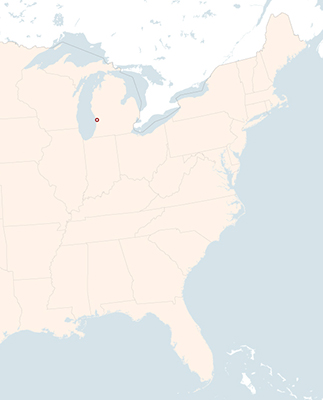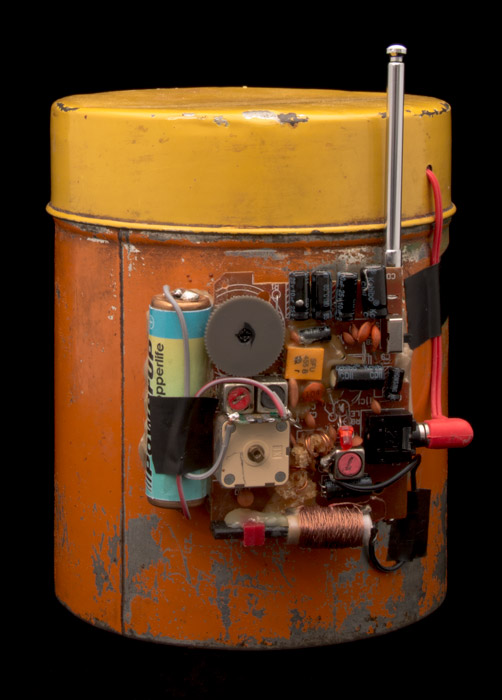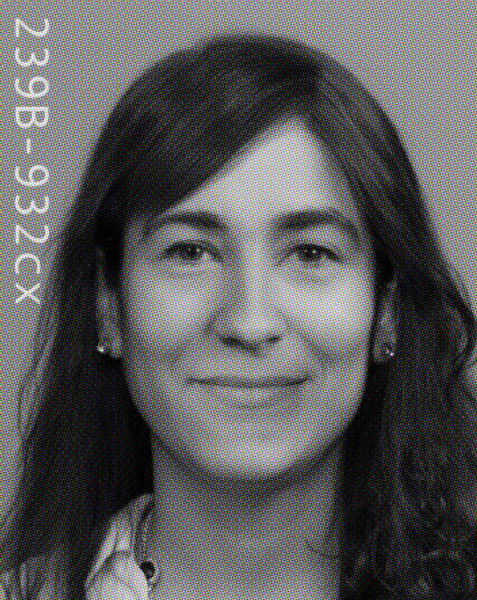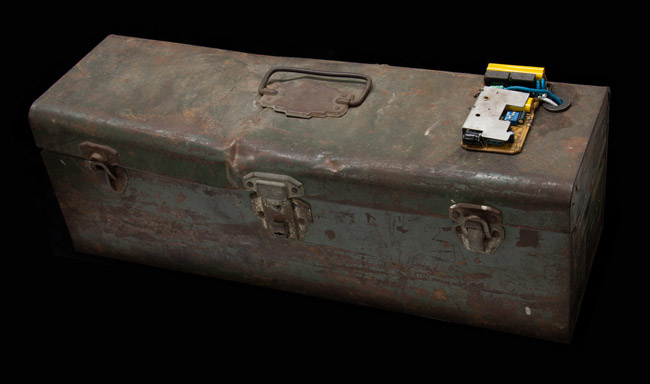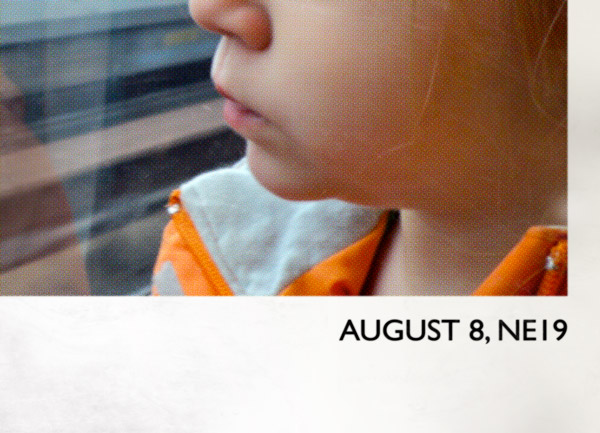The Carverton Ark excavation site, 2014.
Overview of Arks and Arkology
Overview of Arks and Arkology
Frequently asked questions
The discovery of the first Ark in 1971 upended the world, and the political, social, and cultural effects continue to be far-reaching. The American Arkology Society’s research activities have helped educate the public about these mysterious artifacts. Read the primer below for an overview of Arks and arkology.
What are the Arks?
“Ark” is the catch-all term for the mysterious containers that first appeared in 1971. Though they vary in appearance, known Arks are typically military- or industrial-purpose containers manufactured of plastic, fiberglass, or steel. Early theories that the containers were vessels used by unknown peoples to preserve or transmit objects led arkologist Barbara Macher to coin the term “ark” in 1973.
Where was the first Ark found?
The first Ark was found by a construction crew as they expanded the J.H. Campbell power plant in West Olive, Michigan. The power plant’s nearby water source is the reason for its name: the Pigeon Lake Ark. A timeline of subsequent discoveries and their impacts can be found here.
Is there any geographic pattern to Ark distribution?
No. Ark contents frequently reference locations near the find itself, as with the Ark discovered in Conshohocken, Pennsylvania, which contained Philadelphia city water bills and news clippings about a bombing at Independence Hall. However, no discernible pattern in Ark distribution has been found. This is in contrast with discoveries in France, Germany, and the United Kingdom, where roughly 60% of Arks have been found near existing military installations. In rare cases, Arks have been discovered within miles of each other.
How many Arks have been found?
Globally nearly 1,200 Arks have been found, with 421 of these located in the United States. Since the first discovery in 1971, Arks have been found every year, with the number peaking in 1991. Arks have been found on every continent but Antarctica.
Is there an estimate regarding the number of undiscovered Arks?
No. Because no discernible geographic or chronological pattern exists to Ark distribution, arkologists are unable to estimate the number of undiscovered Arks.
Where did the Arks come from?
There is no scholarly consensus about the Arks’ origins. However, opinion generally falls into three camps:
- The Pastorans, led by Dr. Troy Pastor, advance the theory that the Arks have been transported back in time from a near future.
- The Gablerians, named for prominent scholar Dr. Ilsa Gabler, believe that the Arks’ artifacts exist outside of time, and have crossed over from a dimension tracking parallel to our own.
- The Black Ark Group theorizes that the ark artifacts have no otherworldly significance, and have instead been planted by governments to advance their agendas.
Did the Arks come from the future?
Though arkologists disagree about exactly the time point from which the Arks originate, the majority opinion holds that the Arks have traveled back from the future to reach us. As with many aspects of arkology, dissenting voices counter that the Arks are from another dimension, or are an elaborate hoax. Though the future theory is well-supported, other scholars counter that the artifacts themselves found in Arks do not fully back this approach.
Why did the first Ark appear in 1971?
The reason for the initial appearance of the Arks in 1971 is one of arkology’s most enduring mysteries, though there is no shortage of compelling theories. Most scholars link the appearance of the Arks to levels of radioactive material, which rose steadily throughout the 1960s as more and more nations engaged in nuclear weapons testing across the globe. Chemical plant leaks, the increased use of pesticides, and the expansion of US and Soviet Union space programs in the years preceding 1971 have also been advanced as precipitating events.
Artifacts and technology
What is usually found in the Arks?
Most Arks found in the United States have contained what appear to be the effects of a person or persons. Everything from hairbrushes to handguns have been discovered in the Arks. Arks in other countries have yielded other, non-personal items as well, including government documents and industrial chemicals.
Why do these objects appear in the Arks?
The quotidian nature of the objects calls to mind personal effects of the deceased, or possibly items logged during the incarceration process. Indeed, in some cases objects have been found sealed in clear plastic bags as if collected evidence. These finds have furthered the theory that Zone authorities are the driving force behind the Arks.
Who are the owners of the objects found in the Arks?
The people mentioned in the Arks do not correlate with any known living persons. In Arks discovered in the United States, the objects appear to belong to average citizens in the Zonal system. Through artifacts and contextual clues, arkologists have been able to piece together details about the lives of these people, though it is still unknown why these individuals and their objects were collected.
Who put the objects in the Arks? Why?
The identities of the people who placed objects in the Arks is unknown. Less is known about their intentions.
As with many aspects of Arkology, scholars disagree about the fundamentals of these questions – including if the Arks were sent intentionally at all. The Warning Theory, popularized by Yale University’s Karen Naugus, supposes that the Arks are being used as vehicles to warn people about coming strife. This point of view posits that unknown persons collected and sent objects that would spur recipients to action once the Arks were recovered and opened.
The Warning Theory is not without its detractors, however. Sandra Hirschorn of Stanford University’s Department of Arkology Studies has pushed back strenuously against Naugus’s work, arguing that the Arks are merely an accident of space and time. If the Arks are truly a conduit to transmit information, she has argued, why do they lack deliberate communications to an intended audience?
By what mechanism are the Arks transported?
Despite concerted research since the first discovery in 1971, the transportation has never been determined. All arkologists believe that the devices inside the Arks, such as the Telos box in the Jarndyke Ark, power this transport. Though other technologies first discovered in Arks have been used across industries, these devices have never been successfully activated.
From what materials are the Arks usually made?
The Arks discovered to date are constructed of a variety of materials, but all share the characteristics of impermeability and impact resistance. Most Arks resemble resealable military-grade cases used to transport delicate instruments, suggesting the involvement of state actors in the packing and distribution of the Arks.
However, crudely assembled containers, of which the Old Lyme and Jung Arks are examples, appear to be cobbled together from everyday materials. The Old Lyme Ark, unearthed by amateur Ark hunters in Old Lyme, Connecticut, consists of a rusty toolbox that was found wrapped in multiple layers of plastic. Its transporter device was epoxied to the box’s exterior and wires fed through a drilled hole.
The Zones
What are the Zones?
“The Zones” refer to the territories into which the United States of America appears to have fractured. Most theories hold that the Zones were originally formed when American states combined into regional economic “Zones” to gain competitive advantages. As federal power waned, these groups gained greater autonomy, eventually incorporating as sovereign states and seceding one by one.
Though trade and culture seem to move freely between many of the Zones, conflict appears to be rife, as each territory jockeys for resources and influence. The long-simmering war between the Great Lakes and Heartland Zones is just one of many such conflicts.
What do NE and OE mean?
NE and OE refer to “New Era” and “Old Era,” respectively. Arkologists have no consensus as to how – or even if – this time configuration aligns with our own. This dating system appears to have been adopted throughout the western world, much like our use of B.C./A.D. or B.C.E/C.E. The event at the threshold of OE and NE has yet to be determined. Though the exact date of NE01 is not known, many scholars situate it sometime in the late 2020s.
Miscellaneous
What do I do if I find an Ark?
Contact local authorities, who will dispatch a research team to remove the Ark and check the area. If you find an Ark, do not disturb it, as its contents may be dangerous. Federal law prohibits tampering with Arks. You can report a possible Ark find by emailing the Society at find@americanarkology.org.
What happens once an Ark is found?
When an Ark find is reported, laws in most states require that local authorities establish a small exclusion zone until members of the federal Ark Safety Administration (ASA) arrive. These precautions are undertaken to ensure that the Ark poses no danger to life or property. Once the ASA determines the area is safe, the Ark is removed and taken to the closest research facility.
Ground scanning equipment is then used to search for other Arks in the surrounding area. If no other finds are detected, the cordon is removed. The Ark is later scanned, opened, and documented at the facility.
Who can join the AAS?
Membership is open to anyone interested in joining the bright, vibrant community that is the American Arkology Society. Learn more about the Society’s mission.


